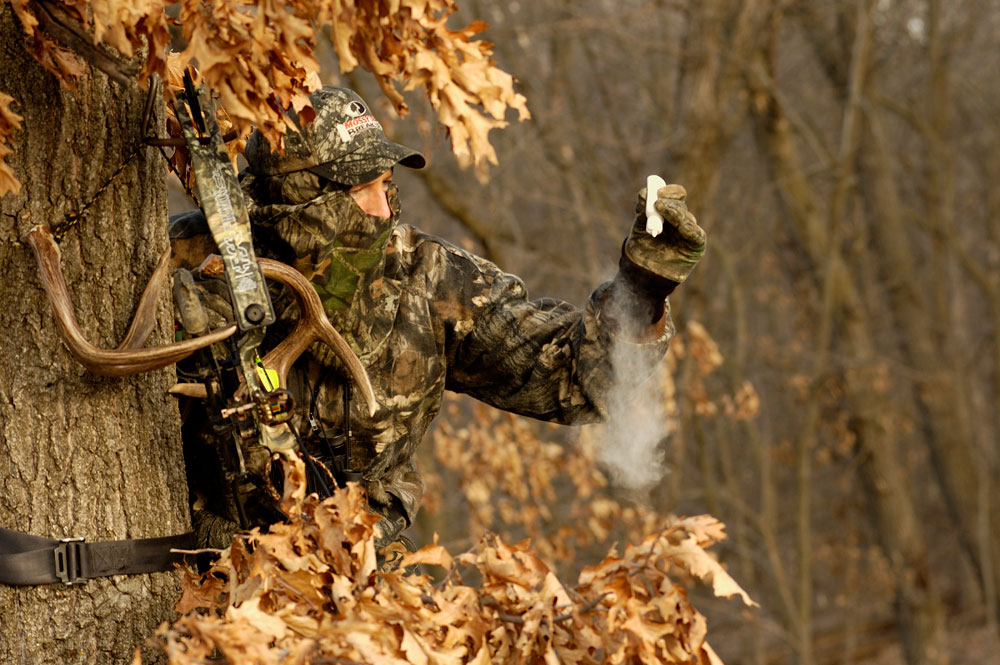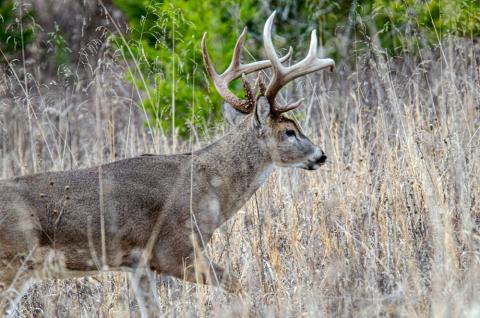provided by John Phillips
Paul Butski of Scio, New York, has been a Mossy Oak Pro from the very beginning of the company. Paul historically has been a turkey-call manufacturer, worked with Walker’s Game Ear and is currently the sales manager for GSM Outdoors that owns Stealth Cam, Hawk Treestands, NAP Archery Products, American Hunter Feeders, Hunter Specialties, HME products, Birchwood Casey, Muddy and other outdoor brands.

I realize that knowing wind direction is a very critical factor in my ability to take deer - not only during bow season but in gun season as well. Therefore, during bow season, what I learn about wind direction in the stands I hunt from will be useful information once gun season arrives. Also, what I’ve learned about getting to and from my stand during bow season can help me tremendously during gun season.
- I want to learn the wind direction along the route I take to my tree stand.
- I want to make sure I have the trail cleared, so that my clothes don’t touch any foliage on the way to my tree stand.
The other thing I learn during bow season that helps me in gun season is that I have the opportunity to create what I call “fall-back stand sites.” How many times have you been in a tree stand and know a buck is moving through the area, but then the wind changes drastically, and you don't have a favorable wind to hunt? I usually have one or two tree stands designated to take that buck if I have a bad wind. I want those stands close to my primary stand. Then if the wind does change, I can come out of the stand where I am and move quickly and easily to one of those other stands I’ve set up that will allow me to take the buck I’m hunting, although the winds have switched.
Also, I want to put up stands for the rut. As most hunters know, during the rut, the deer are likely to come from any direction. However, if I’ve located an area where I primarily have seen does during bow season and early gun season, I’ll set up a stand site there. I understand that the estrous does are what the bucks are looking for to breed during a rut. I also learn at the first of gun season the direction deer will travel when hunting pressure starts. During gun season, hunting pressure may be one of the most reliable factors that cause deer to move. The deer often no longer will be using the trails during daylight hours that they once have used to move from feeding to bedding regions. They’ll now be using escape trails to get away from hunting pressure and to hide from hunters. Also, if I know the history of the trails that deer use when hunting pressure builds up from bow season and years past, that information can be critical to improve my chances of taking an older-age-class buck.
During gun season in high-pressure areas, I’ll be hunting closer to the bedding areas - both early and later than I will be during bow season. I have to understand what the wind conditions are too, so I know I have a favorable wind condition that won’t spook the buck when going to or coming from his bedding area. One important thing to always remember is that there’s not just one factor that you always can count on to determine when and where a deer will move, so you can see him. However, I try to play the odds and do all I can to put the odds in my favor every day I hunt.



























